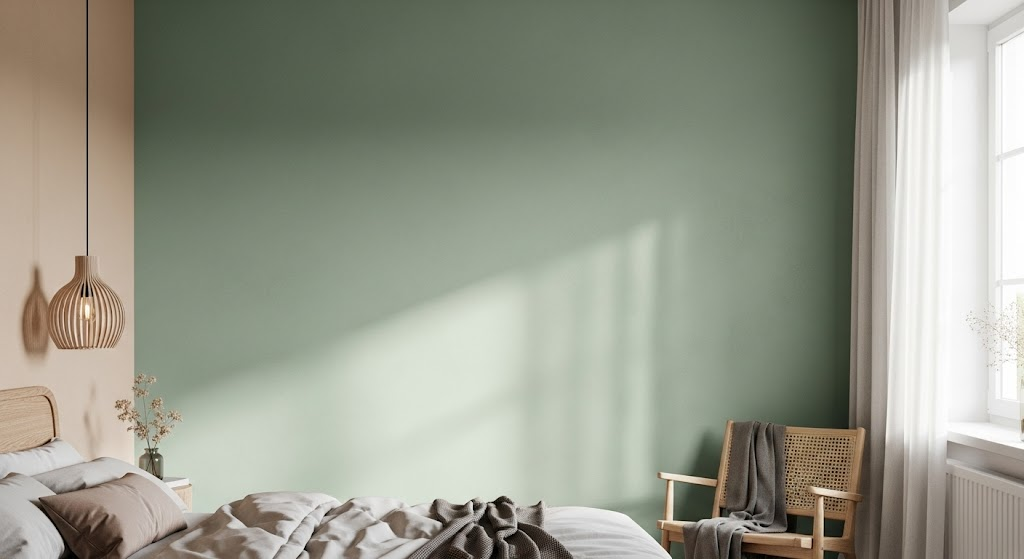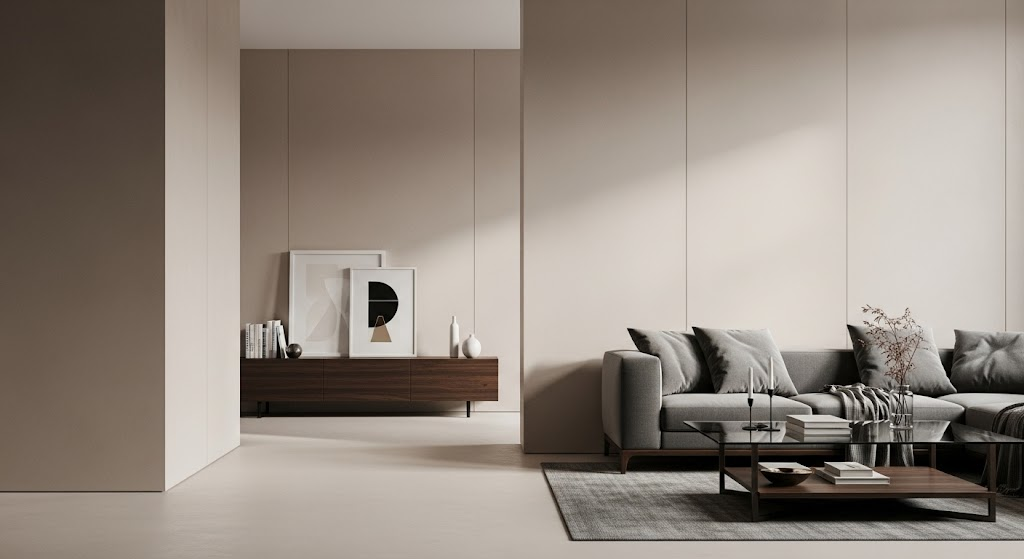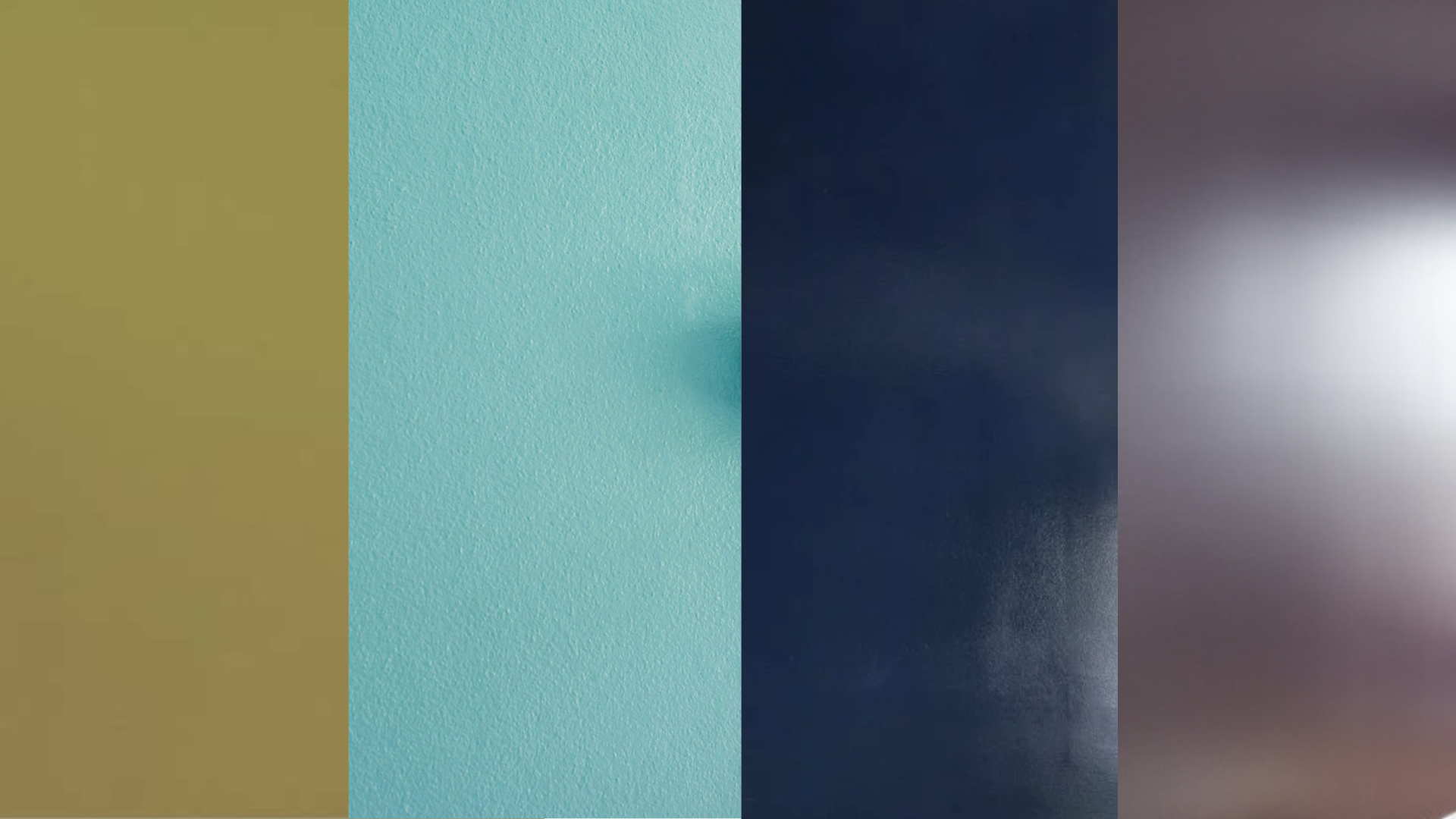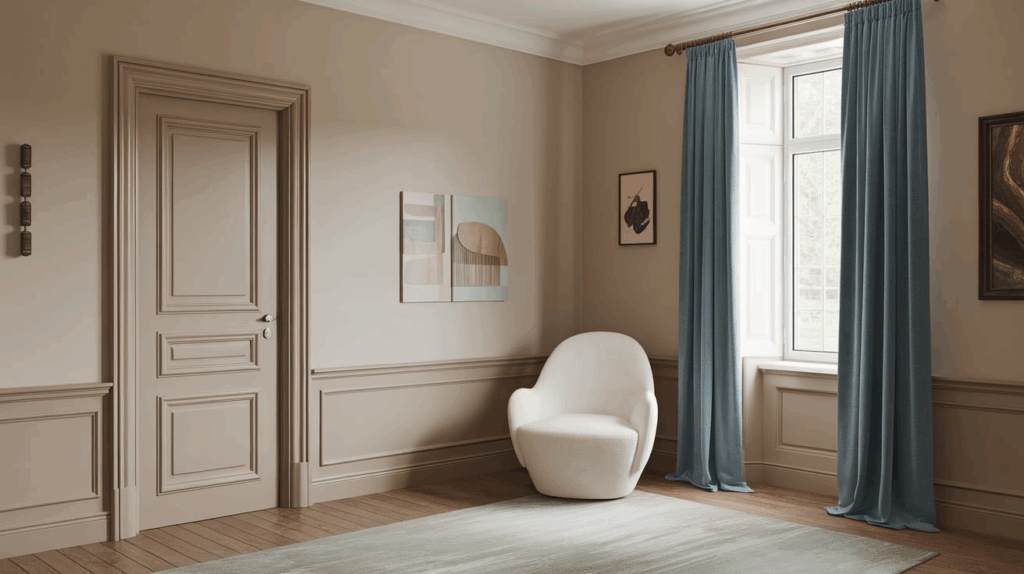When I first started picking out paint finishes, I felt completely lost. I kept hearing about “matte,” but I wasn’t sure what it meant.
Was it just another word for flat? Was it dull or classy? And how did it compare to satin or gloss?
If you’re wondering the same things, don’t worry, you’re not alone.
I’ve since learned that matte finishes have a soft, velvety look that adds warmth and elegance to a space. But they’re not the best choice for every room or surface.
In this blog, I’ll break down exactly what a matte finish is, how it stacks up against other options, and where it shines (or rather, doesn’t shine!).
Stick with me, I’ll help you pick the perfect finish for your next project with confidence.
What Is a Matte Finish?

A matte finish is a type of low-sheen surface that offers a soft, smooth appearance with minimal light reflection.
It creates a subtle, velvety look that helps reduce glare and gives walls a more uniform, elegant feel.
This finish is often chosen for its ability to hide surface imperfections, such as minor cracks or uneven textures, making it a practical option for older walls or ceilings.
Unlike glossier finishes, matte doesn’t shine under light, which contributes to a more relaxed and understated atmosphere.
Matte finishes are popular in spaces where a cozy, refined look is desired. While not as washable or durable as satin or gloss, they provide an appealing aesthetic that suits a wide range of interior styles.
Key Characteristics of Matte Finish Paint
Learn the essential traits of matte finish paint, including its appearance, durability, and best-use scenarios to help you choose the right finish for your space.
1. Low to No Shine
Matte paint has a flat, non-reflective surface with little to no gloss.
It absorbs light instead of reflecting it, giving walls a soft and muted appearance. This makes it ideal for creating a cozy, understated atmosphere.
Unlike shinier finishes, matte helps reduce glare and distractions, making it a popular choice for bedrooms, living rooms, and spaces where a calm visual feel is preferred.
2. Excellent at Hiding Imperfections
One of matte paint’s biggest advantages is its ability to conceal flaws. Because it doesn’t reflect light, uneven surfaces, small dents, or patched areas are much less noticeable.
This makes matte an excellent choice for older walls or less-than-perfect drywall.
It provides a smooth, even finish that looks clean and polished without requiring extensive prep or repair work beforehand.
3. Soft, Elegant Appearance
Matte finishes offer a velvety, refined look that adds quiet sophistication to any room.
They create a soft backdrop that enhances furnishings, art, and textures without overpowering the space.
This finish works well in traditional, modern, or minimalist designs, especially when you’re aiming for warmth and simplicity. Its gentle aesthetic appeal makes it ideal for spaces focused on comfort and visual calm.
4. Not Ideal for High-Traffic Areas
While matte paint is visually appealing, it’s less durable than finishes like satin or semi-gloss.
It’s more likely to show scuffs, fingerprints, and stains, and frequent cleaning can damage the finish.
This makes it less suitable for high-traffic areas like hallways, kitchens, or kids’ rooms. For those spaces, a more washable, resilient option might be a better choice.
Pros and Cons of Matte Paint Finish

A quick comparison of matte paint’s benefits and drawbacks to help you decide if its soft look and subtle finish suit your space and lifestyle.
| Pros | Cons |
|---|---|
| Soft, elegant appearance | Less washable than higher-sheen finishes |
| Minimizes glare with low light reflection | More prone to scuffs and marks |
| Excellent at hiding wall imperfections | Not ideal for high-traffic areas like hallways or kitchens |
| Creates a calm, cozy atmosphere |
It can be harder to clean without damaging the surface |
Best Places to Use Matte Finish
Matte paint is great for spaces where a soft, elegant look matters more than durability. It’s best in low-traffic areas and hides wall flaws well, offering a smooth, velvety finish that adds warmth to any room.
- Bedrooms: Creates a calm, cozy, and restful atmosphere with minimal glare.
- Ceilings: A popular choice since it hides imperfections and doesn’t need regular cleaning.
- Accent Walls: Adds a subtle, refined contrast without drawing too much attention.
- Formal Living Rooms: Offers a polished, sophisticated backdrop in spaces used less frequently.
Choosing Between Matte and Other Finishes

A side-by-side comparison of matte, flat, satin, and gloss finishes to help you choose the best option for your space and needs.
| Feature | Matte | Flat | Satin | Gloss |
|---|---|---|---|---|
| Sheen Level | Low | Very low | Medium | High |
| Light Reflection | Soft, minimal reflection | No reflection | Mild glow | Very reflective |
| Appearance | Smooth, velvety look | Chalky, powdery look | Slightly shiny, clean look | Shiny, polished finish |
| Durability | Moderate | Low | High | Very high |
| Washability | Limited – gentle cleaning only | Poor – may remove paint | Good – easy to clean | Excellent – can withstand scrubbing |
| Best Use Areas | Bedrooms, living rooms, and ceilings | Ceilings, low-traffic walls | Kitchens, bathrooms, hallways | Doors, trim, cabinets |
| Touch-Up Ease | Easy – blends well | Very easy – seamless touch-ups | Moderate – may show patchiness | Difficult – sheen differences visible |
| Hides Imperfections | Excellent – masks flaws | Excellent – hides most imperfections | Moderate – may highlight surface texture | Poor – highlights all wall imperfections |
1. Sheen Level
- Matte: Offers low sheen, giving a soft, muted look ideal for relaxed spaces.
- Flat: Has the least sheen of all finishes; completely non-reflective and ultra-matte.
- Satin: A step up in gloss, with a soft shine that reflects some light without being too glossy.
- Gloss: High sheen that creates a shiny, mirror-like surface and draws attention to the painted area.
2. Light Reflection
- Matte: Reflects very little light, making it ideal for reducing glare and creating a cozy feel.
- Flat: Absorbs light completely, which helps conceal surface flaws but offers no glow.
- Satin: Reflects moderate light, giving walls a soft, radiant glow without too much shine.
- Gloss: Reflects a lot of light, adding brightness and vibrancy to trim, doors, and furniture.
3. Appearance
- Matte: Has a velvety, elegant texture that looks rich and smooth on walls.
- Flat: Appears chalky or powdery, offering a muted, vintage feel.
- Satin: Offers a clean and slightly polished look, perfect for modern, functional spaces.
- Gloss: Looks sleek and polished, often used to highlight architectural features or furniture.
4. Durability
- Matte: Moderately durable, but may scuff in high-use areas.
- Flat: Least durable; easily marked and hard to clean without affecting the finish.
- Satin: Highly durable and ideal for everyday wear in busy areas.
- Gloss: Extremely durable and resistant to moisture, wear, and cleaning.
5. Washability
- Matte: Can be cleaned gently, but aggressive scrubbing may damage the finish.
- Flat: Poor washability, cleaning often removes paint or leaves marks.
- Satin: Washes well with a damp cloth, making it suitable for kitchens and bathrooms.
- Gloss: The easiest to clean; withstands scrubbing and moisture very well.
6. Best Use Areas
- Matte: Works best in low-traffic areas like bedrooms, living rooms, and ceilings.
- Flat: Ideal for ceilings or walls with many imperfections and minimal contact.
- Satin: Great for kitchens, hallways, and bathrooms due to its durability and easy maintenance.
- Gloss: Perfect for trim, doors, cabinets, and furniture anywhere you want a durable, shiny finish.
7. Touch-Up Ease
- Matte: Easy to touch up; blends seamlessly into existing paint.
- Flat: Very touch-up friendly, great for quick fixes on walls or ceilings.
- Satin: Can be touched up, but patches may show depending on lighting.
- Gloss: Hard to touch up without noticeable differences in sheen or texture.
8. Hides Imperfections
- Matte: Hides surface flaws very well thanks to low reflectivity.
- Flat: Excellent at masking imperfections, especially on older or uneven walls.
- Satin: Reveals some surface texture due to its mild shine.
- Gloss: Highlights every flaw, so best used on smooth, well-prepped surfaces.
How to Clean and Maintain Matte Walls
Matte walls require a bit of extra care to keep them looking their best. Since the finish is more delicate than satin or gloss, it can be easily damaged by harsh scrubbing or strong cleaners.
- Dust regularly with a soft cloth or microfiber duster to prevent buildup.
- Blot gently with a damp sponge and mild soapy water for light smudges.
- Avoid scrubbing, which can damage the finish or leave shiny spots.
- Use non-abrasive cleaners made for painted surfaces on tougher stains.
- Test first in an inconspicuous area before cleaning larger spots.
- Skip harsh chemicals and rough tools like scrub brushes or abrasive pads.
- Touch up paint if marks can’t be removed—matte finishes are easier to repaint seamlessly.
- Keep high-touch areas clean with gentle maintenance to extend the life of the finish.
Is Matte Right for You?
Matte paint offers a refined, velvety look that works well in spaces where subtlety and softness are desired.
It’s ideal for rooms with low traffic, where walls are less likely to get scuffed or marked. The finish excels at hiding imperfections and creating a cozy, elegant atmosphere.
However, it’s not the best choice for areas that need frequent cleaning or are prone to heavy use.
Matte’s lower durability and sensitivity to moisture make it less suitable for kitchens, bathrooms, or children’s rooms.
When deciding if matte is right for you, consider how much daily activity your space sees, the lighting conditions, and how often the walls may need cleaning or maintenance
Conclusion
Matte paint has a unique charm that adds warmth, softness, and a touch of elegance to a space.
I’ve found it especially beautiful in bedrooms, living rooms, and ceiling places where you want a calm, cozy vibe without any glare.
That said, it’s not always the best fit for high-traffic areas like kitchens or hallways, where durability and easy cleaning are key.
If you’re on the fence, I recommend testing a few swatches in different lighting and room types.
See how each one feels as the day goes on, it’s amazing how much lighting and surroundings affect the final look.
The right finish isn’t just about looks; it’s about how your space lives. Pick what feels good to you, and let your walls reflect your style.

